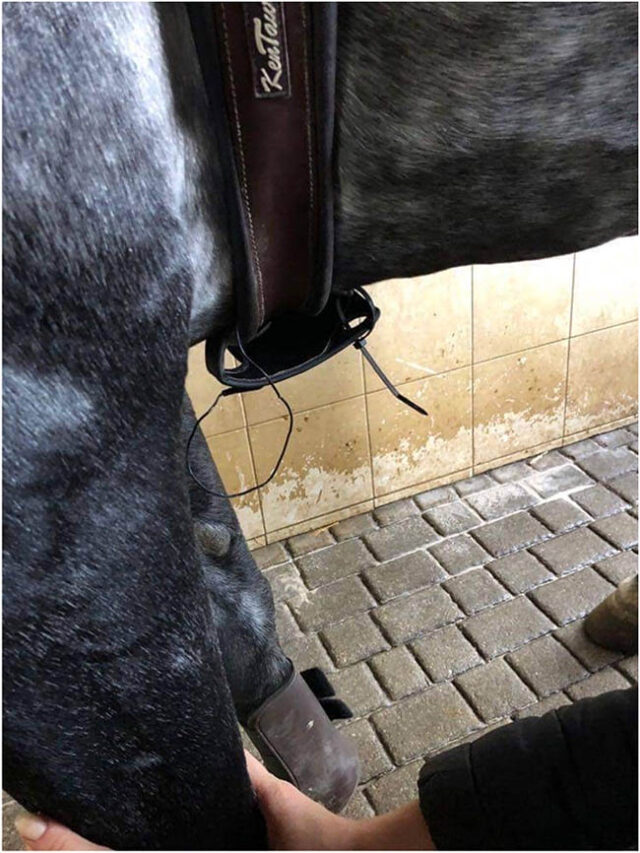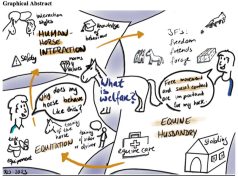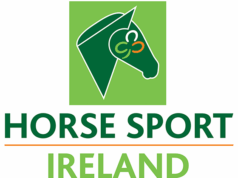
By Katarzyna Becker, Dorota Lewczuk
Photography: © FEI/Thomas Reiner; personal archive
Full title of this article: Variability of jump biomechanics between horses of different age and experience using commercial inertial measurement unit technology.
The application of commercial inertial measurement units has become popular in equestrian sports, which may help to eliminate a gap of knowledge concerning many aspects of biomechanics in training. This study employed the Seaver IMU system to measure jumping characteristics of horses with differing age-competition experience during regular training.
It was hypothesized that experience level results in lower variability of jumping parameters. Twelve Warmblood horses aged 5 to 6 years with/without competition experience and 7 to 11 years with experience were investigated during regular training in two training centers. Consistent number of 10 successive jumps of the individual chosen course of vertical and spread obstacles (5th-15th) were analyzed and the following parameters were measured: jump height, reserve and length; taking off angle, acceleration, velocity; jump spatial shifting, energy by landing, and frequency of approach strides.
Preliminary analysis confirmed comparable physio-logical effort in two training centers based on heart rate, distance and duration measurements. The multifactorial analysis of variance for biomechanical data included in the statistical model the random effect of horse and fixed effects of training center, age-experience group, successive jump number, obstacle type and height. Four parameters were significantly different between the younger, inexperienced group and experienced younger and older horses: height of jump (P = .01), frequency of approach strides (P = .005), acceleration of taking off (P = .01), and energy by landing (P = .0013). Standard errors for almost all the parameters reached higher values for the youngest, inexperienced horses. Variability of jumping parameters was lower for experienced groups of horses, suggesting higher precision on obstacle courses.
1. Introduction
Training of sport horses should focus on the development and improvement of natural movements and jumping technique [1]. Detailed biomechanical assessment of the jumping ability is becoming more popular in equestrian training practice thanks to new sensor technologies (Seaver, Equisense, Equestic or EquiMoves). The commercial Inertial Measurement Unit (IMU) systems are relatively low in price, easy to use, with traits defined according to the practical equestrianism. The equine athlete training process can be monitored precisely in the kinematical, dynamical, and spatial aspects (some systems combine physiological data, as heart rate can be also monitored).
Inertial navigation is used in measuring accelerations and angular velocities in order to determine horse orientation and position. Thompson et al. [2] underlined the usefulness of new types of monitoring devices for equine training, while Bathe et al. [3] validated girth inertial measurement units. Measurement of training performance parameters can significantly influence the choice of appropriate training method to enhance cooperation between the horse and the rider [[4],[5],[6]]. IMU sensors enable easy collection of large amounts of data with high resolution and high sampling frequency [6]. That is why these innovative methods of jump evaluation may also be used more extensively in horse breeding in a near future [[7],[8],[9],[10]], even nowadays its preliminary usage seem equestrian sport.
In the show jumping sport a systematic monitoring of physiology and biomechanics of exercises administrated to the horse can have a significant impact on the achievement of training goals. This is especially since the horse jumping technique performed with and without a rider shows that early training does not give long-lasting effects and it was underlined that every horse has its own individual jumping technique recognizable already early in their lives [11,12]. The scale of course difficulty is related to the size, appearance and type of obstacles, route and distances between obstacles.
The influence of these all effects on the equine biomechanics should be investigated in detail and taken into account by the sport horse training. The visual structure of an obstacle is widely known as one of the main factors responsible for the level of course difficulty [13] and affecting the jumping technique individually [14]. The number of repetitions can be an important factor in the evaluation of jumping quality [8,9]. The FEI rules regulate the maximum number of jumps to be undertaken, as well as the type, height and duration of the competition (FEI Rules, www.fei.org) in accordance to the horse age and experience. The size of the obstacles should be appropriate to the athlete training status... To read the complete article you need to be a subscriber
CLICK HERE TO SUBSCRIBE TO BREEDING NEWS
SUBSCRIBERS CAN READ THE COMPLETE ARTICLE BY LOGGING IN AND RETURNING TO THIS PAGE



